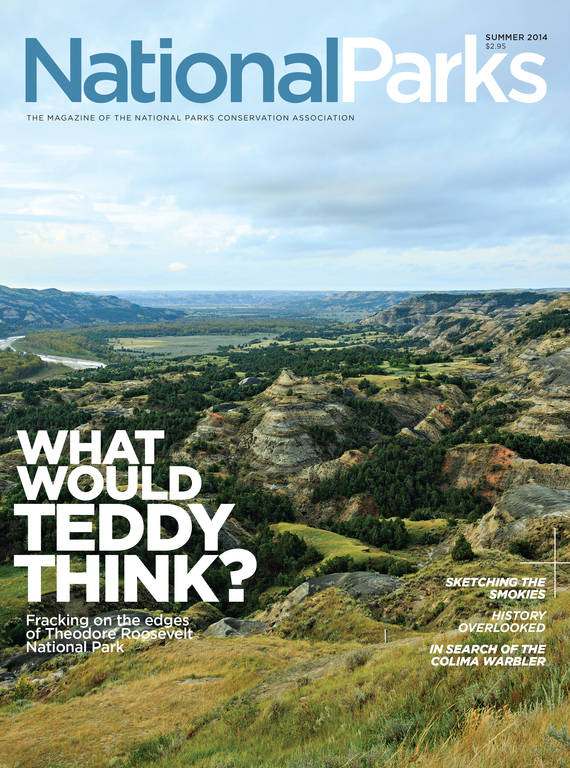Summer 2014
A Way With Words
The Franklin Court Printing Office in Philadelphia highlights Benjamin Franklin’s early career.
Benjamin Franklin was a boy of just 12 when his father steered him into an apprenticeship with his older brother, James, a Boston printer. He loved the trade but chafed under his brother’s stern treatment; as soon as he turned 17, he ran away to Philadelphia. Following a brief interlude in London, he opened his own printing house in Philadelphia. He was 22.
“Keep thy shop and thy shop will keep thee,” Franklin would later write. “He that has a trade has an estate.”
Franklin may be best remembered as a scientist, inventor, politician, diplomat, or signer of the Constitution, but his illustrious professional life began with the simple, hand-operated printing press. The building that housed Franklin’s business no longer stands, but in 1976, the National Park Service set up a working reproduction of an 18th-century printing office a few blocks away.
MAKING THE TYPE
The Franklin Court Printing Office is part of a Benjamin Franklin park that includes a newly refurbished museum, an operating post office, and metal “ghost structures” showing where Franklin’s home once stood, as well as the site of his grandson’s printing shop. On a typical spring day, as many as 1,200 visitors pass through this corner of Independence National Historical Park to see the press in action and hear the story of Franklin’s early, ink-stained years.
The Printing Office has two working presses: The replica most frequently employed closely resembles a press Franklin used while in London (that’s now owned by the Smithsonian Museum of American History). In the 18th century, paper was made from old linen rags and dipped in water before use, which opened the fibers, allowing the ink to be absorbed. Printers applied the ink—a tacky concoction of tree sap, linseed oil, and soot—by quickly pounding on the type with leather ink beaters, which look something like boxing gloves on sticks. Type foundries didn’t exist in America until after the Revolutionary War, so Franklin imported his lead type from overseas. He was fond of the Caslon font, which was developed by a British engraver and is still available digitally today.
Before the linotype machine was invented in the late 19th century, printers laboriously grabbed one letter at a time, lining the type up backwards and upside down. A completed form, or page, of type could weigh as much as 80 pounds. Printers typically worked in pairs: One used ink beaters, and a second pulled the lever that literally pressed the ink onto the paper. In this fashion, they could complete a page in about 15 or 20 seconds, making 2,000 copies a day from a single press. (The elegance and speed of the process can astound young visitors, who often gasp when guides pull out a finished page during tours.)
“What they were able to do with machinery like this is quite remarkable,” says Thomas Daniels, a park ranger at the site.
As Daniels and other park rangers like to point out, the printing press was the colonists’ radio, television, Internet, and Twitter rolled into one. Yet with this one clunky device, colonists were able to communicate news, information, and ideas to many thousands of people—and, yes, even start a revolution.
Franklin, one of the most accomplished printers of the era, produced legal documents, government contracts, and paper money that used leaf impressions to thwart counterfeiters. He also printed The Pennsylvania Gazette, a newspaper he bought in 1729 and transformed into a witty, popular publication. Last year, the Printing Office produced a faithful, four-page copy of the entire paper from October 6, 1743. The edition shows the typical range of content: news from abroad, a letter from a ship captain, notices, and advertisements. During that time, the paper frequently carried ads for runaway slaves, but Franklin’s views on slavery evolved over time, and later, he printed abolitionist writings and led a group devoted to that cause.

National Parks
You can read this and other stories about history, nature, culture, art, conservation, travel, science and more in National Parks magazine. Your tax-deductible membership donation of $25 or more entitles…
See more ›Poor Richard’s Almanack, published annually from 1733 through 1758, was Franklin’s most successful printing venture. Some of Franklin’s best-known aphorisms first appeared in the slight book, between standard tables of tides, planetary motion, and weather predictions. “I endeavour’d to make it both entertaining and useful,” Franklin wrote in his autobiography, “and it accordingly came to be in such demand that I reap’d considerable profit….”
Indeed, Franklin’s printing business made him a wealthy man, allowing him to “retire” at age 42 and devote time to his other interests. He left day-to-day shop operations to a partner.
In 1766, Franklin sold his business, but he lived until age 84 and never truly left printing behind. His last will and testament notably began, “I, Benjamin Franklin, of Philadelphia, printer….” Likewise, an epitaph he wrote as a younger man underscored his attachment to his trade. Though he later changed his mind about the epitaph and it now appears near—not on—his gravestone, it is frequently cited because it so perfectly seems to capture his spirit. “The body of Benjamin Franklin, printer,” it reads. “Like the covering of an old book, its contents torn out and stript of its lettering and gilding, lies here, food for worms. But the work shall not be lost. It will (as he believ’d) appear once more in a new and more beautiful edition corrected and amended by the author.”
About the author
-
 Rona Marech Editor-in-Chief
Rona Marech Editor-in-ChiefRona Marech is the editor-in-chief of National Parks, NPCA’s award-winning magazine. Formerly a staff writer at the Baltimore Sun and the San Francisco Chronicle, Rona joined NPCA in 2013.



